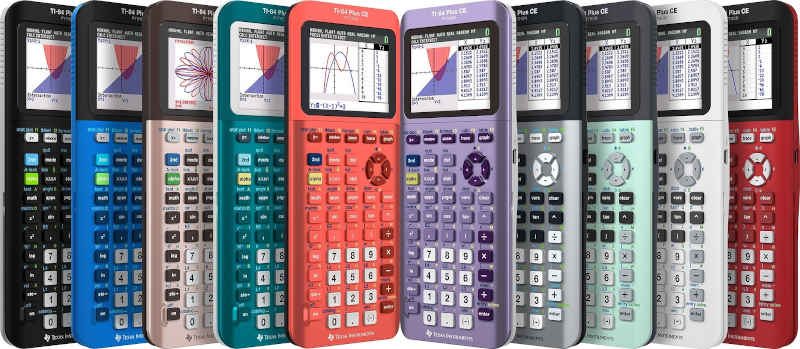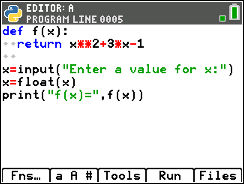| TI-84 Calculator Goes Python |
| Written by Mike James | |||
| Friday, 20 August 2021 | |||
|
Python gets everywhere, but a calculator? The classic TI-84, has been almost the standard graphics calculator since it was introduced in 2004, and now you can program the latest model using Python - yes Python...
You may well have used a TI-84 calculator in at school and maybe even in an exam - I know I have. You can do amazing things with it just with the basic functions and the TI-BASIC language made if possible to write custom calculators, demonstrations and teaching aids. You could also program some models in C and Z80 assembler but this was for the serious enthusiast. Yes the processor is a Z80 perhaps the last mass market use of the venerable processor. You could also point out that it shows how little the calculator has developed over time because it is still a Z80 in the new model. However, stability and a limit on what the calculator can do is part of the success of the device in the educational market. The new model offers Python which means students can use a general programming knowledge rather than something specialized, i.e. TI-BASIC. However you can still use TI-BASIC if you want to. You can write fairly convincing Python programs on the device. For example:
The version of Python used is Circuit Python which is a fork of MicroPython implemented by Adafruit. "TI-Python is based on CircuitPython, a variant of Python 3 for teaching coding. It was developed by Adafruit and adapted for use by TI. The interpreter of your Python program is executed within this TI-Python environment, separate and different from the CE OS calculations. Calculations may also vary from other versions of Python due to number type storage in the Python version." As a user of MicroPython I can say that most of the time you won't notice the difference between it and Python 3. I'm not sure why TI chose to use CircuitPython rather than MicroPython, but there isn't any real difference at the language level. To run CircuitPython there is a Cortex M0 ARM co-processor, so no need to recompile the interpreter to work on a Z80. Some time later in the year, TI is planning to release some sort of interface with the MicroBit so perhaps the choice of CircuitPython is due to this - we will have to wait and see. If you are wondering why graphics calculators are even a thing any more, surely tablets, portables and even phones are powerful enough to do the same job? Yes, but they can also do much more. The advantage of a well-defined graphics calculator is that students are restricted in what they can do - no checking up with Google to answer a question. In fact calculators, the TI range for example, are certified for different type of exam and this makes it easy for invigilators to check that everything is allowed and no cheating is going on. "..the TI-84 Plus CE Python graphing calculator is approved for high-stakes exams, including the PSAT/NMSQT*, SAT* and ACT® college entrance exams as well as Advanced Placement* and IB® exams that allow or require a graphing calculator." Yes graphical calculators have a long life ahead of them. More InformationTexas Instruments new TI-84 Plus CE Python graphing calculator introduces students to programming Related ArticlesTo be informed about new articles on I Programmer, sign up for our weekly newsletter, subscribe to the RSS feed and follow us on Twitter, Facebook or Linkedin.
Comments
or email your comment to: comments@i-programmer.info
|
|||
| Last Updated ( Friday, 20 August 2021 ) |




